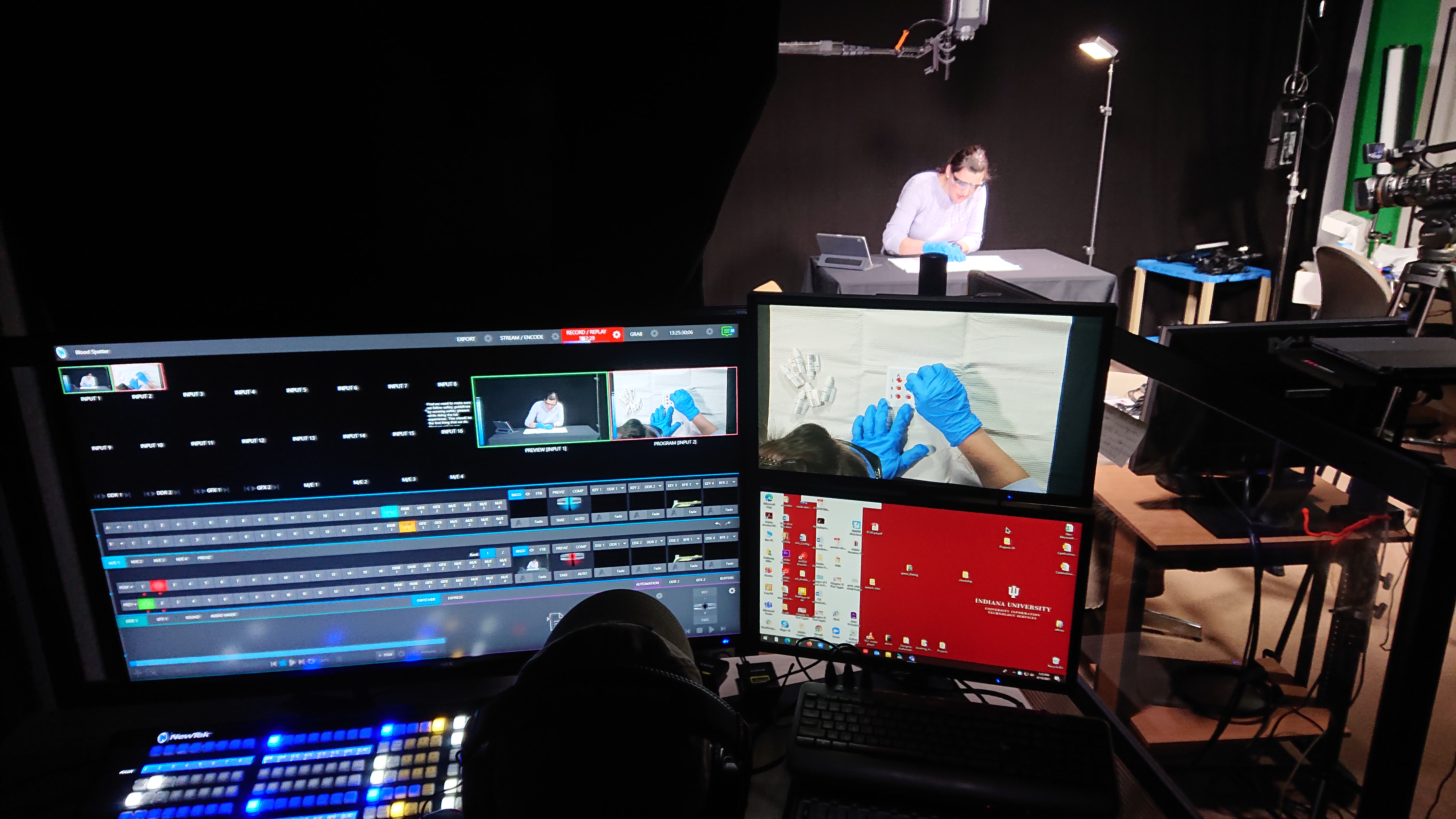Video Lectures: 4 Tips for Teachers
Creating short and engaging video lectures for students is a growing trend at education institutions

Indiana University has lecture capture technology in place in nearly every classroom, giving instructors the option to record their lectures to create video lessons.
The university has been utilizing this in-class, live-lecture capture technology for more than a decade, but it has its limitations, says James McGookey, the university’s manager of collaboration technologies and classroom support.
“We would have faculty members who had demonstrations or guest speakers, and we'd get these lecture capture or video conference recordings, and they tried to reuse them semester after semester because the content was really good, but the quality was really not that good,” he says. “If it’s just a review, that’s okay, but when it’s three years down the road and you’re watching this terrible recording, it’s difficult to watch.”
To encourage a more professional type of evergreen video resource, the institution has invested in lecture capture studios, adding five new ones over the past year so each campus has at least one. Some of these studios are DIY, others require a crew, but all enable professors to record lectures in a professional recording environment, complete with green screens and high-quality lighting and audio. The recordings are then edited by the studio team who can help the professor follow the best pedagogical practices for video recordings, including keeping videos short and engaging.
New research suggests students learn better from video lectures than in-person lectures, while the pandemic has forced many institutions to rethink how to deliver educational content. Indiana University and other higher ed institutions are upping their lecture capture game. This is being done both for online students and as an asynchronous resource for in-person students as more professors see the potential of the medium.
“The feedback that I've heard from faculty is, ‘Well, now we've done Zoom recordings. How do we take it up to the next level?’” McGookey says. Whether teaching in-person or online, high-quality videos assigned outside of synchronous class time are a good tool for flipped learning and active learning strategies.

Tips for Using Lecture Capture Technology
1. Create Short and Engaging Video Lectures
Tools and ideas to transform education. Sign up below.
Today, every professor has the technology to capture video on their smartphone or laptop. But not all videos are created equal, says Chris J. Foley, associate vice president and director of the office of online education at Indiana University.
“There's a real difference between watching a 40-minute video of somebody writing on a whiteboard, looking at the back of their head if they're in a classroom, versus maybe creating 10 five-minute lectures, where you have a front-facing individual,” he says.
The pandemic also taught students and educators alike how draining it can be to stare at a screen for eight hours per day. Foley says if you can tighten up a 15-minute lecture to under 10 minutes, that will make it easier for students reviewing the material to zero in on the key concepts.
2. Make Video Lectures Interactive
Beyond investing in recording and lighting equipment, Indiana University is also providing tools for faculty to make their videos interactive.
“We want to ensure that we have other support mechanisms in place so that these videos can be engaging,” says Julie Johnston, acting associate vice president of learning technologies. “We really push forward the interactive quizzing to engage the students more in the content versus just, ‘Watch this video.’”
3. Support Video Lectures As An Institution
Successfully implementing a strong video program at your university requires institutional commitment. “Develop a strategy for systematic video support,” Johnston says. At Indiana University, specific practices and procedures are in place for how videos are posted. “There's a formal process that all faculty use for where they post their videos and where they're just embedded.”
Johnston also advises universities to develop a framework to support entry into video in low-, medium-, and high-production value capacities. “Our low entry would be things such as using Adobe Rush with your phone for video editing. Then medium would be our self-service studios. And then the high production would be our production studio. So we are supporting all three levels, in some way, shape, or form.”
4. Don’t Reinvent the Wheel
“Be humble about your ability to create something new,” Foley says. “Don't create what already exists.”
He adds, “Why would I spend time giving a lecture on Jim Collins’ [book] ‘Good to Great,’ when I can go to YouTube and have Jim Collins explain ‘Good to Great.’ I should talk about why it's valuable to me and how to apply it to my students.”
Using existing video lectures when appropriate saves time for the professor and can make things more interesting for students, Foley says.
Erik Ofgang is a Tech & Learning contributor. A journalist, author and educator, his work has appeared in The New York Times, the Washington Post, the Smithsonian, The Atlantic, and Associated Press. He currently teaches at Western Connecticut State University’s MFA program. While a staff writer at Connecticut Magazine he won a Society of Professional Journalism Award for his education reporting. He is interested in how humans learn and how technology can make that more effective.

